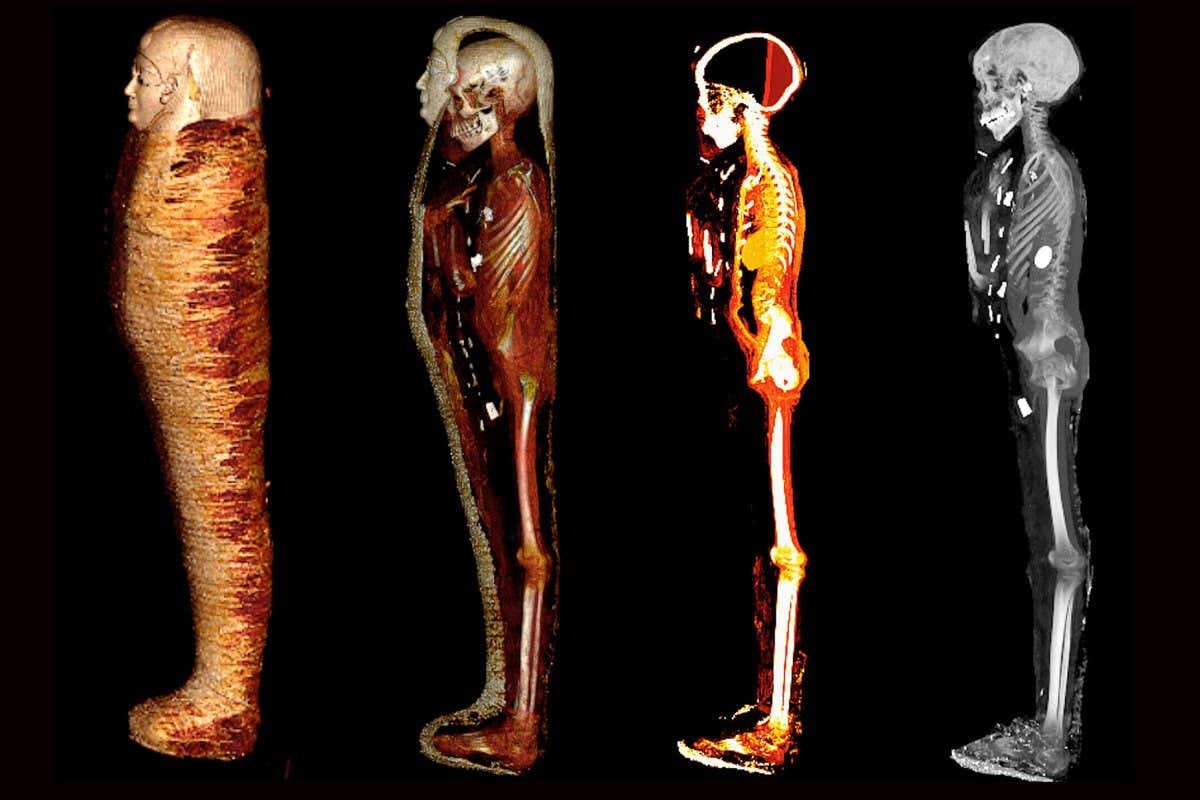CT Scans Unlock Secrets of Ancient Mummy

Credit: SN Saleem, SA Seddik, M el-Halwagy
In 1967, Sir Godfrey Hounsfield invented the first CT scanner using X-ray technology. In 1971, the first brain CT scan was performed in Wimbledon, England. CT (Computed Tomography) scans, also known as CAT scans, are a vital tool in the world of medicine. CT uses advanced X-ray technology to take pictures of the inside of your body by reconstructing the data into cross-sectional pictures, called slices or sections. Our radiologists at RadNet use CTs every day to help them diagnose a wide variety of illnesses that may not be seen with other modalities. But did you know, scientists can use CT scans to look into our past?
For decades, anthropologists have been using CT scans to take a look at human remains from throughout history. Recently, researchers at Cairo University in Egypt used CT scans to digitally “unwrap” a 23,000-year-old mummy known as the “Golden Boy.” According to a report published in Frontiers in Medicine, the mummy was 14 to 15 years old when he died, and was decked with 49 pieces of jewelry designed to protect him as he journeyed into the afterlife. The jewelry was made out of a variety of materials, and included such items as a golden scarab placed inside the boy’s thoracic cavity and gold-plated tongue in his mouth.
Dr. Sahar Saleem, professor of radiology at Cairo University, along with his colleagues, used CT to “gain insight into the mummification procedures and beliefs about the importance of grave ornaments.” Explaining about the amulets, Dr. Saleem said that they were “beautifully stylized in a unique arrangement of three columns between the folds of the wrappings and inside the mummy's body cavity.” According to the Book of the Dead, Egyptians believed that the deceased needed to bargain their way into the afterlife, so they would mummify them with lots of gold and other precious items.
In addition to this fascinating discovery, CT scans, along with other screening modalities, have been used to help researchers learn more about dinosaurs, uncover lost inscriptions on ancient artifacts, unearth ancient rock paintings – and many other amazing findings that could not have been possible without the incredible advancements that have been made in radiology and imaging technology.

